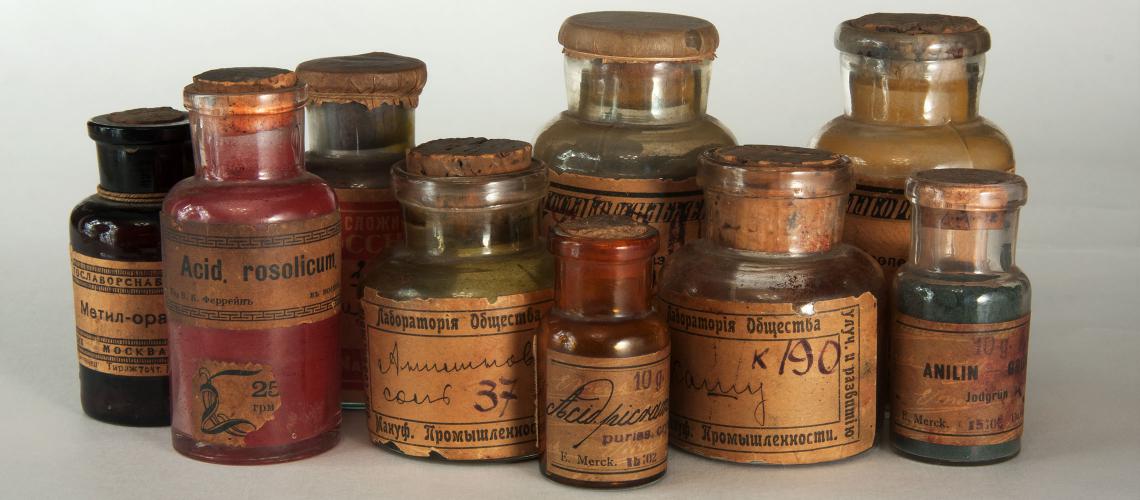The aquatint is considered as a method of etching to the gravure techniques and is also called ink etching. The printing plate is from copper or zinc. In advance, it is degreased and cleaned with whiting. Then it is dusted with asphalt or resin or resinous products (rosin, for example) and heated so that the superficial dust layer melts. This results in incumbent sediments. It is important that the resin does not completely melt on the plate: There must be an irregular, grainy surface. [1,2]
The video below (German language) shows a detailed description of the entire process.
The printing plate is subsequently covered with lacquer and etched. Parts appearing white after printing are protected with masking lacquer. The presence of the previously created, covering and open points (the resulting raster of resin beads) ensures that the color is later picked up only from the recessed areas. However, elevated areas appear white after printing. It follows a laminar etching of the plate. The acid generates small depressions around the resin granules in the metal, which can then absorb the printing ink. [2]
Different gradations of shades of gray can be achieved by repeatedly covering and etching the printing plate step by step in several passes. The already formed pits will be deepened and can absorb more color. The longer the acid penetrates, the more color can be absorbed and the darker these areas will appear after printing on the paper.
The print resembles an ink drawing. Before printing can carried out, the resin beads are removed again from the plate. This is followed by inking of the printing plate and application of a moistened, absorbent paper before the pressure is conducted in a press. In this way, about one hundred prints can be made before the plate wears and the clarity of the drawing gets lost. [2]
Aquatint has been used since the second half of 18th century. The two graphic artists Hans Körnig (German, 1905-1989) and Francisco de Goya (Spanish, 1746-1828) used it as an artistic means of expression, for example. [3,4]
References
[1] Zender, Joachim Elias: Lexikon Buch, Druck, Papier, 2008.
[2] Aquatint (German):
https://de.wikipedia.org/wiki/Aquatinta
[3] Hans Körnig (German):
https://de.wikipedia.org/wiki/Hans_K%C3%B6rnig
[4] Francisco de Goya (German):
https://de.wikipedia.org/wiki/Francisco_de_Goya



